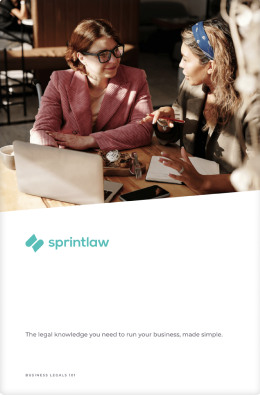Contents
In this day and age, chances are you’ve agreed to an End User Licence Agreement (EULA) before.
If you’ve downloaded any apps on your phone or programmes on your computer – then you may have clicked a tick box (that you may or may not have read). These are typically referred to as EULAs.
Why Would You Need An EULA?
If you’ve developed an app or a software as a service, you may be thinking it’s enough to just have a SaaS Agreement in place. This may be the case if, as a developer, you’re selling your software directly to the market. But this is not always the case.
When individual users (businesses, individuals, students and more) download and use your software for different purposes, there are many more risks involved. This is the end user of your platform. And you want to make sure they’re using your software correctly.
There are two scenarios that often arise.
Firstly, when a developer engages another business to market and sell their software, it is important that the end users of their software adhere to the terms of use (that is, the specific user that will be accessing the platform). In order to set the rules as to how their software is being used by that user, a developer could have users agree to an EULA when they download it.
Another common scenario occurs within an enterprise when a business purchases licences for their employees. In this case, while you can bind the enterprise to your terms and conditions – how can you ensure the employees using the software adhere to the terms of use? You can retain control of your software by making sure employees (and all users) agree to an EULA before downloading it.
What’s In An EULA?
SaaS Agreements and EULAs often go hand in hand. If you already have a SaaS Agreement, it is important to make sure the drafting of your EULA is consistent with it.
Some clauses that are typical of EULAs are:
- Prohibiting copyright infringement: depending on the nature of your software, if it allows users to post content, this opens up liability for developers and software licensors. To limit their liability, an EULA can mandate that end users are restricted from posting any third-party content that may breach copyright.
- No reverse engineering: an EULA can prohibit reverse engineering of software. Reverse engineering is where users may take a software’s binary code and trace it back to the original source code. Clauses to the effect of this help protect intellectual property and trade secrets.
- Terms of use for downloading, installing and using the software: generally, an EULA is important to limit liability which you may be exposed to through end user misuse, or even when your software is temporarily unavailable for upgrades and maintenance.
- Termination: in the case of misuse by an end user, the EULA will give the developer or the licensor the ability to enforce their terms and take action like removing users for non-compliance.
How Can I Use An EULA?
EULAs can come in many forms and are tailored to their product. The two main types are:
- A shrink-wrap licence: If you have a software that comes in plastic-wrapped packaging, you might have an EULA in the form of a shrink wrap licence. These agreements are generally effective the moment the user takes off the shrink wrap.
- A click-wrap licence: You can have users agree to an EULA through a digital click box saying ‘I agree’.
Need Help With An EULA?
As a software-powered law firm ourselves with an internal development team, we very much understand the role of EULAs and the protections they can afford.
Whether you’ve already got a SaaS Agreement, or looking for advice as to how to best protect your software and intellectual property, we’re here to help!
Feel free to get in touch either at [email protected] or at 0800 002 184.
Get in touch now!
We'll get back to you within 1 business day.











